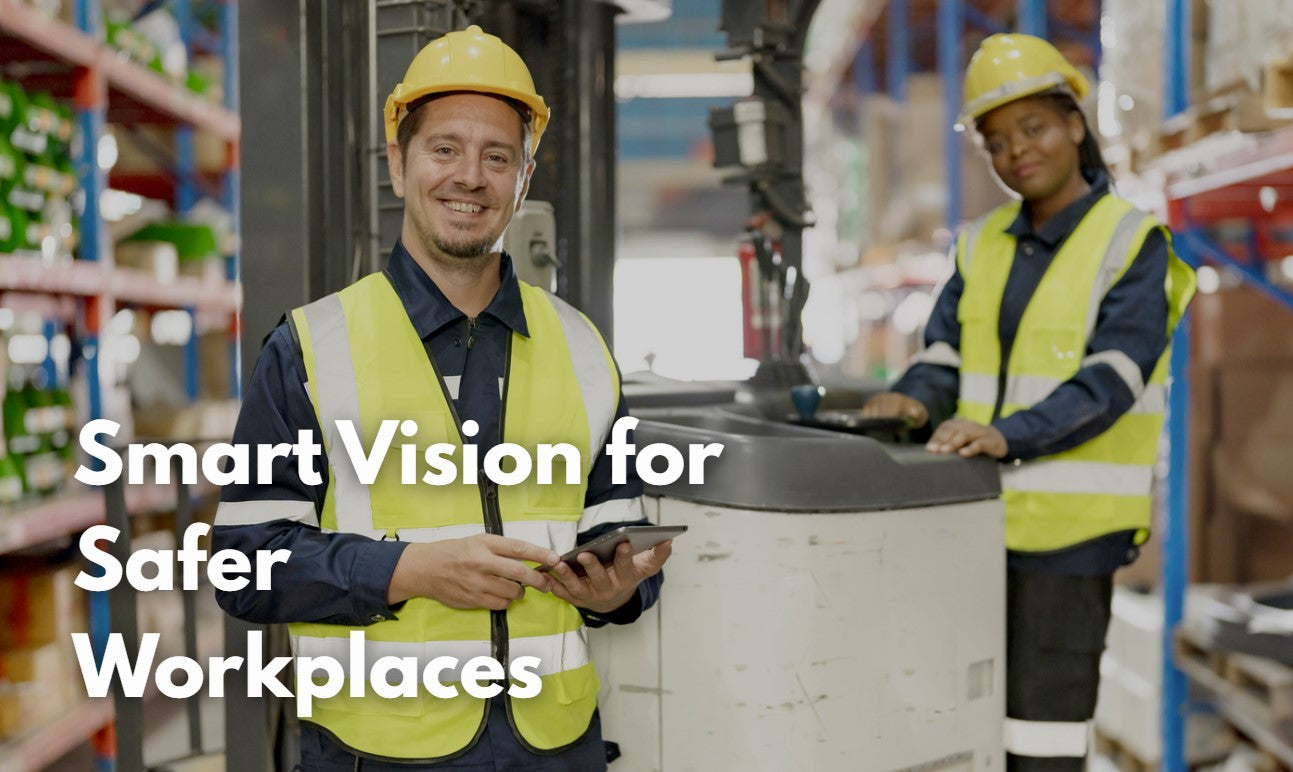The True Cost of Safety: How Smart Vision Helps Prevent Mistakes You Can’t Afford
It happens in a split second: A missing helmet, a loose glove, a moment of fatigue. In industrial workplaces, small oversights can trigger consequences that reach far beyond the factory floor.
Every day, experienced teams navigate environments where precision and safety depend on each other. Unfortunately, even the best training can’t eliminate human error. The real challenge isn’t avoiding mistakes altogether. It is catching them before they turn into incidents.
That’s where smart vision technology, powered by industrial AI, is transforming how companies protect both their people and their profits.
The best safety systems don’t blame, they support.
The Hidden Cost of Unsafe Moments
Safety isn’t just a rule, it’s a pillar of a successful operation. But statistics reveal how fragile it can really be.
In Germany alone, there were 783,426 reportable accidents at work and 381 fatal work-related accidents in 2023. On a global scale, work-related accidents and diseases place a major economic burden. According to the Institution of Occupational Safety and Health (IOSH), they account for an estimated 3.94 percent of global GDP, representing trillions in lost productivity, healthcare costs, and compensation each year.
Behind those figures are disrupted schedules, shaken confidence, and deeply emotional tolls that rarely appear on spreadsheets. The European Agency for Safety and Health at Work (EU-OSHA) reports that 80-90% of incidents involve human error, not because workers are careless, but because fatigue, distraction, and routine inevitably slip in.

The real surprise is how costly those slips can be. Each small mistake is like pushing the first domino in a long chain. Lost hours, insurance claims, rework, and downtime follow. In short: every “small” mistake has its price, whether it’s measured in euros, hours, or morale.
When Small Habits Become Big Risks
Picture a normal afternoon in a warehouse. Orders pile up, deadlines press. A forklift driver takes off his helmet “just for a minute” to adjust a pallet. It is an everyday shortcut until he stands up too quickly and hits a metal beam he did not notice.
He’s lucky. A mild concussion, nothing worse. But shipments pause for the rest of the day, the shift schedule collapses, and the safety team launches an audit.
No one meant for it to happen. That’s exactly the point.
Most accidents start quietly with a habit, a lapse, a moment of overconfidence. Traditional safety systems can’t always see those moments coming.
From Policing to Protecting
Old-style safety cameras and audits tell you what already happened. They record, but they don’t react.
Smart vision systems do the opposite. Using AI-driven image recognition, they recognize potential danger as it unfolds, small things, such as a missing helmet, a person stepping too close to a robot arm, a vehicle entering a restricted zone.

The philosophy has shifted: it’s no longer about policing behavior, but protecting workers. Prevent, not punish.
When AI is seen as a safeguard rather than surveillance, it stops feeling like control and starts feeling like care.
The Technology Behind Accessible Safety
This shift is not theoretical, it’s already delivering measurable change worldwide.
In real-world deployments of AI-based PPE and behavior-detection systems, manufacturers, such as Mantinga, a key player in the Baltic frozen food industry, have reported substantial reductions in safety violations and near-misses.
Until recently, AI-based vision systems were far out of reach for most companies. They required specialized teams, expensive hardware, long training cycles, and integration projects that only large enterprises could justify.
Smaller manufacturers were left behind.
This is changing quickly. Modern vision technology no longer depends on deep technical expertise. It is built to be trained by the people who know the environment best: supervisors, operators, and safety teams.

This is where Brain Builder, part of Sony’s AITRIOS platform, fits in. It allows organizations of any size to create and deploy AI vision models realistically, without specialized data science teams or complex setups. A few sample images, clear labeling, and the system learns to recognize exactly the situations that matter in your workplace.
Getting started is straightforward: Combine a compatible AI camera, such as the Raspberry Pi AI Camera with the Brain Builder software. The setup is minimal, the learning curve is gentle, and the system scales easily as your needs grow.
The result is not a futuristic surveillance tool. It is a practical way to give teams early warning, consistency, and an extra layer of protection during the moments that humans naturally overlook.
If you want to explore what this could look like in your own environment, you can start with the free Brain Builder trial and experiment with real images from your workplace.
These systems don’t discipline employees. They uncover patterns, such as:
- Which areas see the most missed helmets or gloves
- When compliance drops (often late in shifts)
- How lighting, signage, or layout influence risk
Where workers consistently step too close to active machinery - Which walkways or intersections create near-miss situations between vehicles and pedestrians
- Where objects or tools are repeatedly left in unsafe positions
- Which inspection steps are most frequently skipped during busy periods
Teams work with more confidence, operations run more smoothly, and risks stop turning into incidents. Smart vision does not replace people. It simply helps them stay safe in the moments that matter.
Next we’ll look at another silent source of losses in daily operations: quality errors, and how AI vision helps stop them before they turn into rework, waste or lost contracts.


